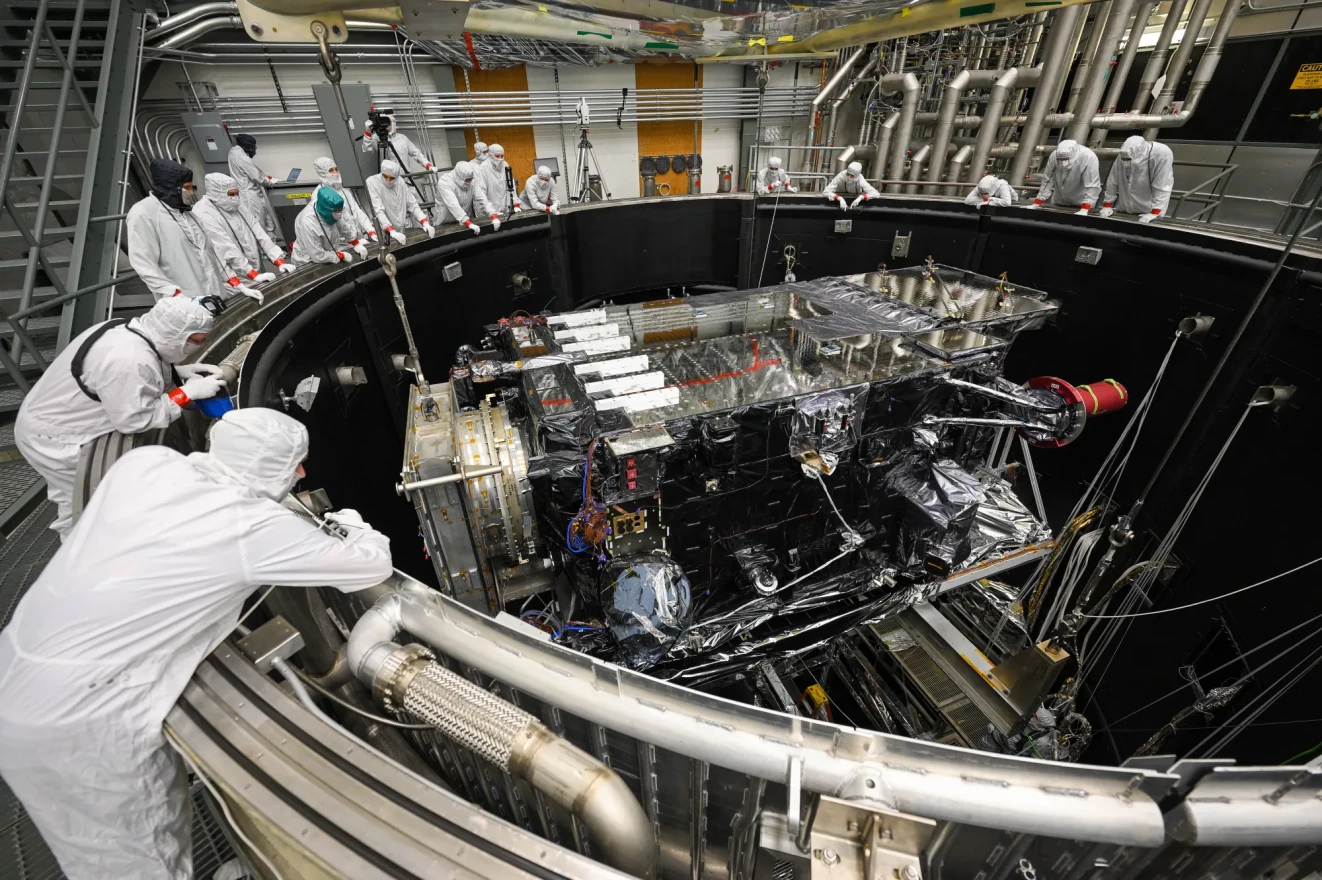
Florida Public Radio Emergency Network (FPREN) Storm Center | By Irene Sans
The Cape has been extremely busy in the last few years with the addition of private space companies launching from Kennedy Space Center. This week is no different, with at least 3 launches scheduled for the next 7 days. All launches are special, but this week is extra special for the weather enterprise because aboard a Space X Falcon Heavy rocket will launch the latest weather eye that will be monitoring the Atlantic Basin as early as next summer.
This is the final satellite of the Geostationary Operational Environmental Satellites (GOES) Series. The first satellite, of 4, launched in November 2016, and is the current satellite (currently named GOES-East originally named GOES S, before launch, or GOES 16 once in orbit) that’s monitoring the Eastern half of the United States including a big chunk of the Atlantic Basin.
The second one launched in March 2018, eventually became GOES 17 and monitored the western half of the U.S. and a chunk of the eastern Pacific Ocean. GOES 18 was launched in March 2022, and after an evaluation period replaced GOES 17, after the latter one had some issues and was put on standby as a backup.

The last satellite is known as GOES U before launch. Once it launches it will be known as GOES 19 and it is set to replace GOES 17 after all instruments are calibrated and evaluated for at least a year. GOES 17 or GOES East will then be placed on standby in orbit. If any of the operational satellites fail or run into any issues, then a standby satellite will take its place for constant monitoring.

What instruments will it have aboard?
All four satellites of this series have the same instruments aboard but with slightly better technology. It takes about a decade to build a series and the technology advances in that decade, so you can imagine that engineers in this mission have to think well ahead of what could be coming in the technology pipeline.
- Geostationary Lightning Mapper, GLM, is a tool that became popular among meteorologists when the first satellite of this series became operational. It shows lightning wherever storms are. Previous to this, lightning was only seen from radars, this meant that lightning could only be observed within the reach of the satellite beam. There was no visibility of lightning over the ocean. This improvement has become particularly important in researching tropical cyclones that are far from land, as now we can interpret taller storms by the lightning it is producing.
- The Advanced Baseline Imager (ABI) is the primary instrument on the GOES-R Series satellites for imaging Earth’s weather, ocean, and environment. This is the instrument that allows scientists to track hurricanes, tornadoes, wildfires, etc.
- The Solar Ultraviolet Imager (SUVI) and Extreme Ultraviolet and X-ray Irradiance Sensors (EXIS) provide imaging of the sun and detection of solar flares.
- Magnetometer (MAG) The geomagnetic field product monitors changes in the Earth’s geomagnetic field in three-dimensional space.
- Space Environment In-Situ Suite (SEISS): is a suite of instruments and sensors that measures energetic heavy ion fluxes in the Earth’s magnetosphere, it helps study how the electrons, protons, and ions interact with the rocket but also some of these instruments will study how the ions interact with the Earth’s Magnetosphere and what happens when magnetic storms impact the earth.
One unique instrument aboard!
There is a special instrument in GOES 19 that has everyone excited, the compact coronagraph (CCOR). It is the first of its kind on a geosynchronous orbit and will be monitoring the Sun’s corona daily. The CCOR will study the Sun’s large explosions closely by producing a total solar eclipse for itself (not visible to us on Earth) every 30 minutes, blocking the Sun’s disk, and just allowing the corona to show. Geomagnetic storms are a beautiful spectacle to watch but they can cause big problems in communications and ultimately the economy, therefore scientists are more determined to study them and predict them more accurately.

This final satellite is unique because it would be the first launch by SpaceX, as the other 3 were launched by United Launch Alliance, aboard Atlas V rockets. This time Space has Falcon Heavy, the most powerful rocket used in the U.S., to launch this historic task. The final GOES satellite is expected to become operational by next summer, just in time for next year’s hurricane season. The two-hour launch window starts at 5:16 p.m. on June 25, you canwatch it live here or below.

Leave a Reply









